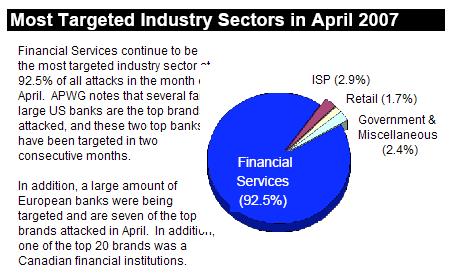According to Britain's The Register, the world's largest credit card heist might be twice as large as previously admitted.
A retailer called TJX was able to create a system so badly conceived, designed and implemented that 94 million accounts could be stolen. It is thought that the potential cost could reach 1 billion dollars – or even more. The Register says:
The world's largest credit card heist may be bigger than we thought. Much bigger.
According to court documents filed by a group of banks, more than 94 million accounts fell into the hands of criminals as a result of a massive security breach suffered by TJX, the Massachusetts-based retailer.
That's more than double what TJX fessed up to in March, when it estimated some 45.7 million card numbers were stolen during a 17-month span in which criminals had almost unfettered access to the company's back-end systems. Going by the smaller estimate, TJX still presided over the largest data security SNAFU in history. But credit card issuers are accusing TJX of employing fuzzy math in an attempt to contain the damage.
“Unlike other limited data breaches where ‘pastime hackers’ may have accessed data with no intention to commit fraud, in this case it is beyond doubt that there is an extremely high risk that the compromised data will be used for illegal purposes,” read the document, filed Tuesday in US District Court in Boston. “Faced with overwhelming exposure to losses it created, TJX continues to downplay the seriousness of the situation.”
TJX officials didn't return a call requesting comment for this story.
The new figures may mean TJX will have to pay more than previously estimated to clean up the mess. According to the document, Visa has incurred fraud losses of $68m to $83m resulting from the theft of 65 million accounts. That calculates to a cost of $1.04 to $1.28 per card. Applying the same rate to the 29 million MasterCard numbers lost, the total fraud losses alone could top more than $120m.
Research firms have estimated the total loss from the breach could reach $1bn once settlements, once legal settlements and lost sales are tallied. But that figure was at least partly based on the belief that fewer than 46 million accounts were intercepted (more…)
Interestingly, the actual court case is not focused on the systems themselves, but on the representations made about the systems to the banks. According to eWeek, U.S. District Judge William Young told the plaintiffs,
“You're going to have to prove that TJX made negligent misrepresentations. That it was under a duty to speak and didn't speak and knew what its problems were and didn't say to MasterCard and Visa that they weren't encrypting and the like,” Young said. “That's why MasterCard and Visa acted to allow TJX to get into the electronic, plastic monetary exchange upon which the economic health of the nation now rests.
This was a case where the storage architecture was wrong. The access architecture was wrong. The security architecture was missing. Information was collected and stored in a way that made it too easy to gain access to too much.
Given the losses involved, if the banks lose against TJX, we can expect them to devise contracts strong enought that they can win against the next “TJX”. So I'm hopeful that one way or the other, this breach, precisely because of its predictability and cost, will help bring the “need to know” principle into many more systems.
I'd like to see us discussing potential architectures that can help here rather than leaving every retailer to fend for itself.



 A three-week wave of massive cyber-attacks on the small Baltic country of Estonia, the first known incidence of such an assault on a state, is causing alarm across the western alliance, with Nato urgently examining the offensive and its implications.
A three-week wave of massive cyber-attacks on the small Baltic country of Estonia, the first known incidence of such an assault on a state, is causing alarm across the western alliance, with Nato urgently examining the offensive and its implications.